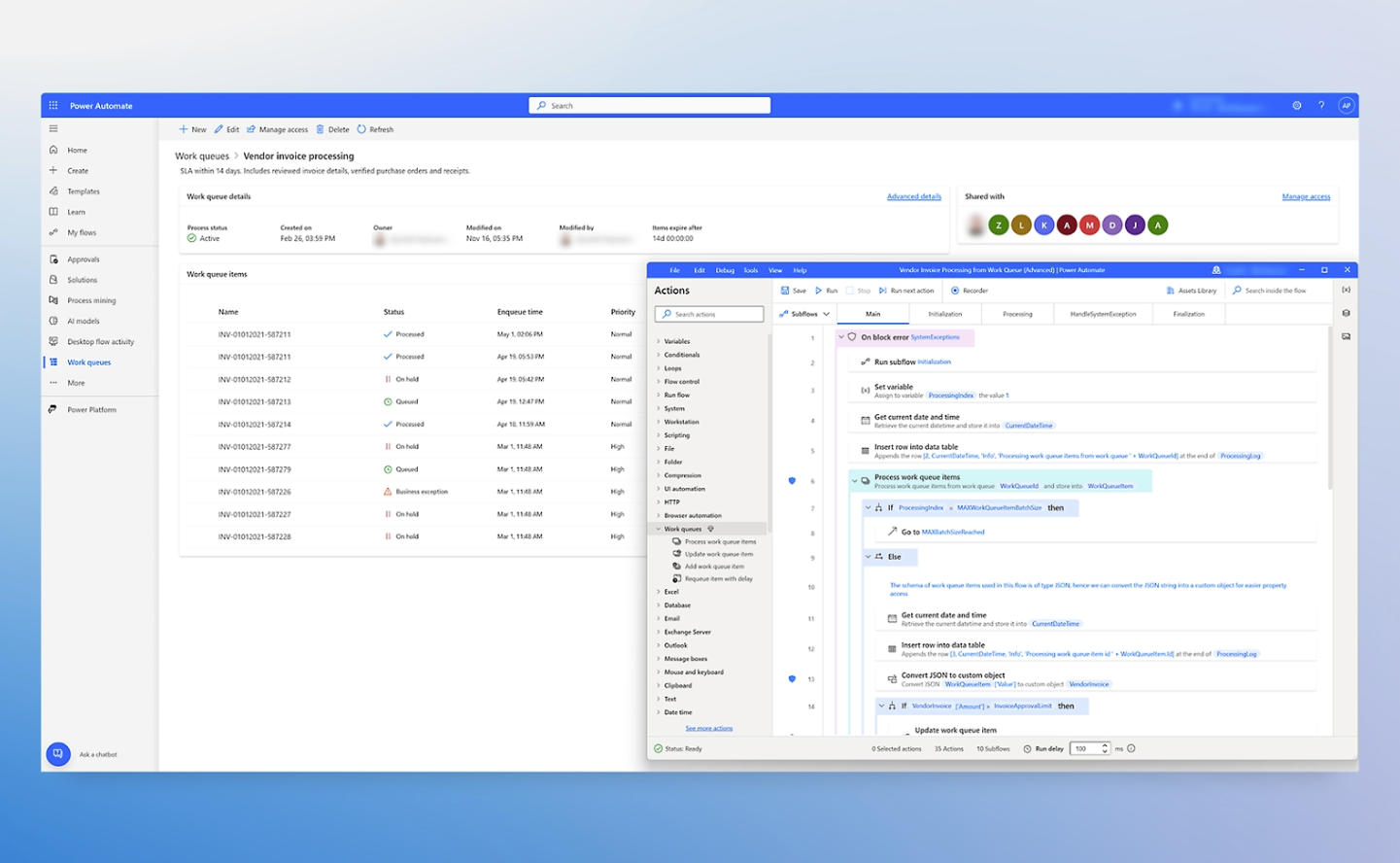In June 2026, Nintex will reach end-of-life support for Microsoft environments, meaning organisations that currently rely on Nintex will need to explore alternatives. For those invested in Microsoft 365, Power Automate is the natural successor.
Power Automate not only offers similar workflow automation capabilities, but it also delivers deeper integration with the Microsoft ecosystem, enhanced scalability, and long-term investment from Microsoft.
In this article, we’ll walk through the key differences between Nintex and Power Automate to show why moving to Power Automate is the right step forward.
Nintex vs Power Automate
Ease of use and integration
Nintex has long been known for its user-friendly drag-and-drop interface, which made workflow creation accessible to business users. However, when it comes to more complicated workflows it can be a bit more challenging. Power Automate on the other hand not only matches Nintex’ ease of use, but also integrates seamlessly across Microsoft 365, including SharePoint, Teams, Outlook, and Dynamics 365.
For businesses already using Microsoft tools, Power Automate provides a smoother, more consistent experience without the need for third-party add-ons.
Licensing and cost efficiency
Nintex licensing can become complex and expensive, particularly for organisations with a high volume of workflows and forms. With Nintex leaving Microsoft environments, that investment also becomes harder to justify long term.
Power Automate, by contrast, is included in many Microsoft 365 subscriptions. This makes it a cost-effective option for organisations already invested in the Microsoft stack, with flexible pricing models that scale as automation needs grow.
Customisation and extensibility
Both platforms allow for advanced workflows, but Power Automate offers far greater extensibility. With over 1,000 pre-built connectors and deep integration with Power Apps, Dataverse, and Azure Logic Apps, it enables enterprise-grade automation at scale.
Organisations can leverage pre-built templates to accelerate deployment or build custom connectors for more complex scenarios, making it a flexible solution for both IT teams and citizen developers.
Support and future-readiness
Microsoft is investing heavily in Power Automate as part of its Power Platform strategy, bringing in new features such as AI-driven automation, enhanced governance, and stronger security.
In comparison, Nintex is no longer a long-term option within Microsoft environments, making Power Automate not just the better fit today, but the only supported choice for the future.
If your organisation currently uses Nintex, now is the time to start planning your transition. Power Automate not only ensures continuity but also opens the door to more powerful automation, greater integration, and ongoing innovation from Microsoft. At Bridgeall, we help organisations migrate from Nintex to Power Automate smoothly, while maximising the opportunity to modernise workflows along the way. Whether you’re planning a full migration or looking to optimise your automation strategy, our team of Microsoft-certified consultants can help.
Contact us to learn how we can help you make the switch or optimise your existing automation environment.




